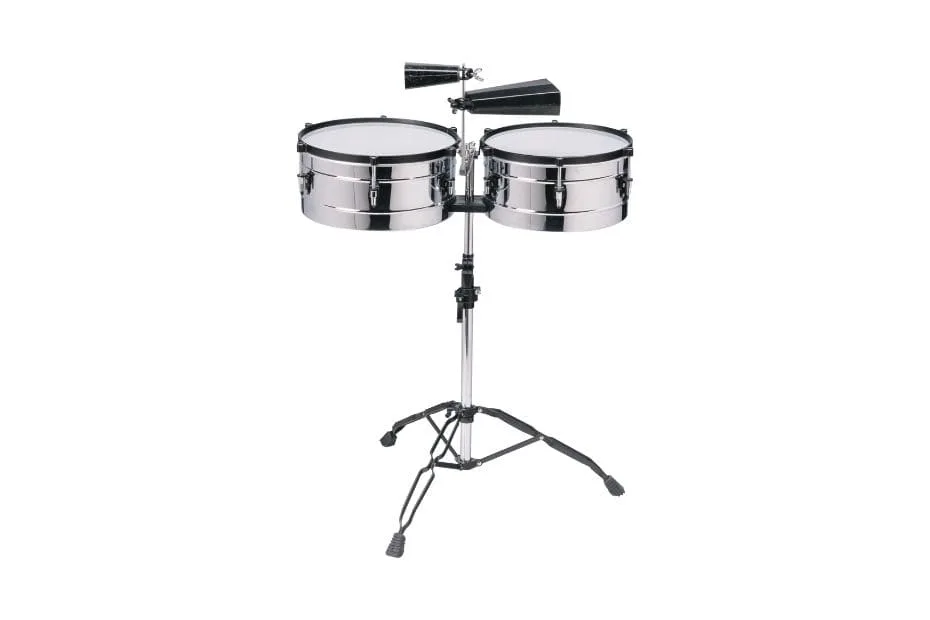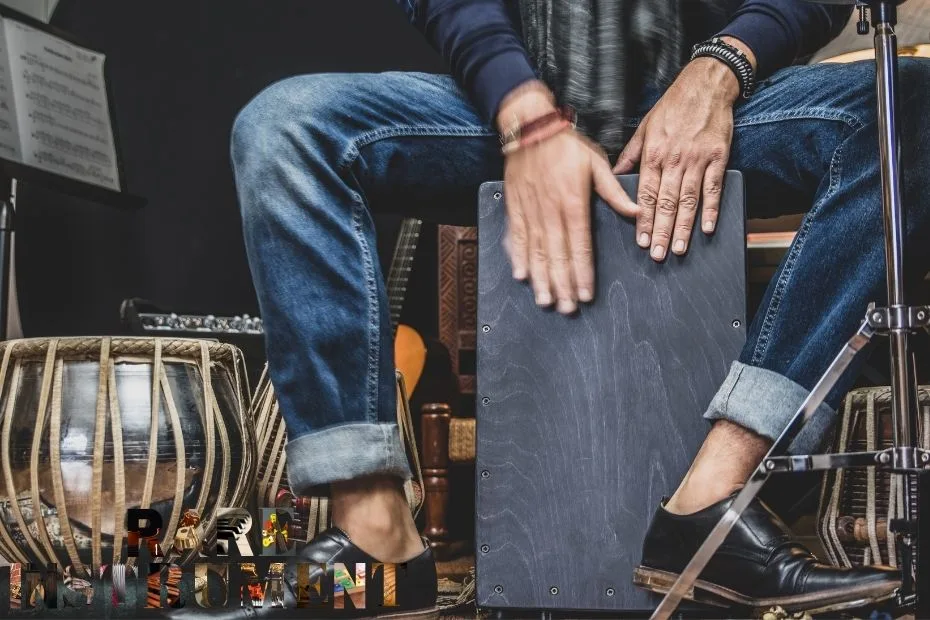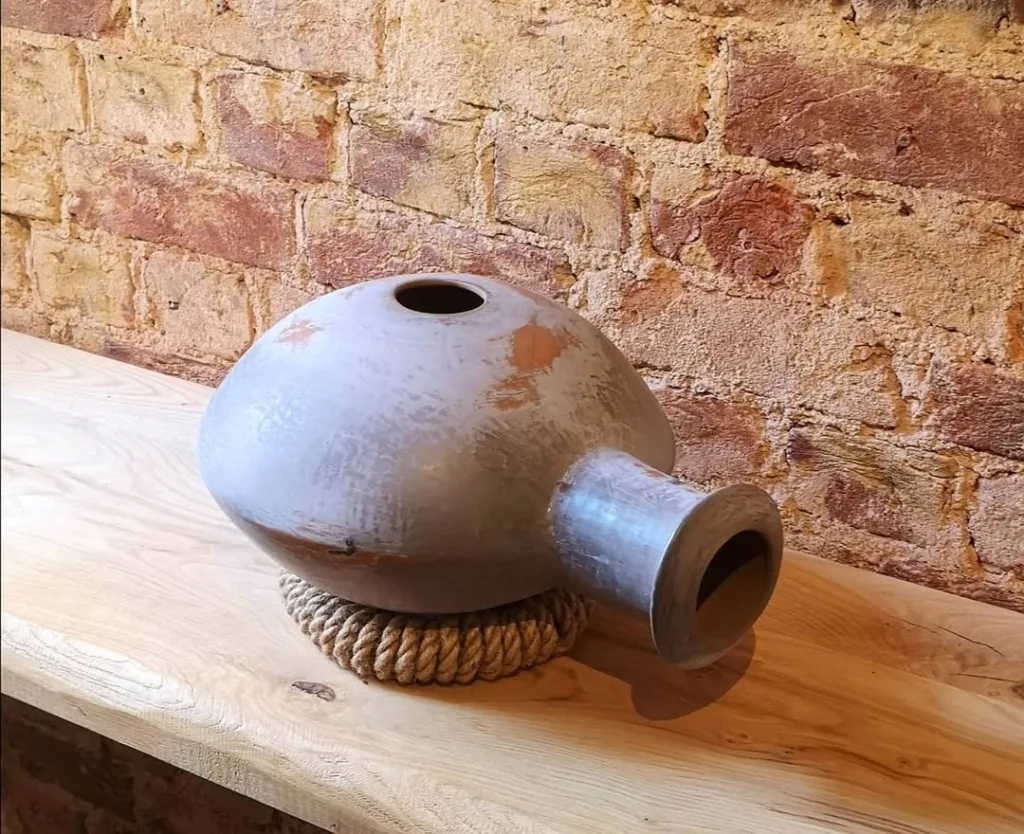The Ultimate Guide to Timbales: Sound, Setup, and Styles
Few percussion instruments cut through a band with as much sparkle and authority as the timbales. From classic mambo and salsa to Latin jazz, pop tours, and modern fusion, this shallow, metal-shelled duo is both a rhythmic engine and a show-stopping lead voice. Whether you’re upgrading your Latin percussion arsenal or buying your very first set, this guide walks you through sounds, sizes, materials, techniques, and pro setup tips—so your timbales speak with clarity, power, and style.
Timbales at a Glance: Quick Specs
| Feature | Typical Options | Why It Matters |
|---|---|---|
| Shell Sizes | Pairs like 13″/14″, 12″/13″, or 14″/15″ | Determines pitch spread and projection; larger sizes = fuller, lower tones |
| Shell Material | Steel, Brass, Bronze, Aluminum | Changes timbre and brightness; steel is bright and cutting, brass/bronze add warmth |
| Shell Depth | 6″–8″ (typical) | Affects body and sustain; deeper shells offer more punch |
| Heads | Single-ply Mylar, clear or coated | Clear = crisp attack; coated = slightly warmer, controlled overtones |
| Hardware | Heavy-duty stand, cowbell/woodblock mounts | Stability and expandability; secure mounts are essential for bells |
| Use Cases | Salsa, Mambo, Cha-cha-cha, Latin Jazz, Pop, Studio | Versatile voice for both groove and lead fills |
What Are Timbales?
Timbales are a matched pair of shallow, metal-shelled drums played with sticks on the heads, rims, and the shell itself. Unlike toms, timbales feature high-tension single-ply heads, snappy rimshots, and a signature shell-playing technique called cáscara. Originating in Cuba and popularized by bandleaders like Tito Puente, timbales carry the rhythmic DNA of mambo, cha-cha-cha, and son, but they’re equally at home in modern Latin jazz, funk, and pop.
Anatomy of a Timbal Kit
- Shells: Usually steel (bright and cutting) or brass/bronze (rounder, warmer). Aluminum provides a lighter, drier sound.
- Heads: Single-ply plastic (Mylar). Clear heads favor attack; coated heads tame highs and help in bright rooms or studios.
- Rims and Lugs: Strong hoops for aggressive rimshots; robust lugs handle high tension without detuning.
- Stand: A double-braced, height-adjustable stand is crucial—timbales take a beating.
- Bells and Blocks: A mambo bell and cha-cha bell are standard. Many players add a woodblock or jam block.
- Sticks: Straight, tipless timbale sticks emphasize articulation and shell clarity.
Sound and Materials: Finding Your Voice
The material and size you choose shape the heartbeat of your sound:
- Steel: Bright, loud, highly articulate. Excellent for cutting through horn bands and amplified stages.
- Brass: Fuller lows and a touch of sweetness in the highs. Great all-rounder for live and studio.
- Bronze: Warm, complex overtones; a favorite among players chasing a refined, classic voice.
- Aluminum: Lightweight with fast decay—ideal when you want control and dryness.
Size pairings color your sonic palette:
- 12″/13″: Tighter, higher-pitched, very responsive for intricate stick work.
- 13″/14″: The versatile standard—balanced projection and pitch range.
- 14″/15″: Big, open, orchestral vibe; perfect for powerful mambo sections.
Core Techniques and Rhythms
Master these essentials to unlock musicality and groove:
- Cáscara: Played on the shell with the stick’s shoulder. Keep it relaxed and even; it drives the band during verses and softer sections.
- Rimshots and cross-sticks: The voice of punctuation. Mix clean head strokes with rimshots for dynamic shape.
- Abanico: A classic flam-like sweep from rim to head—use as a stylish fill or section cue.
- Bell Patterns: The mambo bell pattern lifts choruses; the tighter cha-cha bell supports medium tempos with clarity.
- Clave awareness: Align figures with 2–3 or 3–2 clave flow to keep the ensemble locked.
Choosing the Right Timbales
Consider your stage, genre, and budget when selecting a set:
- Genre Fit: For salsa and big-band mambo, a 13″/14″ or 14″/15″ pairing provides drama and headroom. Latin jazz players often prefer 12″/13″ for nimble articulation.
- Material: Choose steel if you need maximum cut; go brass/bronze for warmth and studio-friendly tone.
- Hardware: Look for a stable stand with independent height/tilt, welded bell mounts, and memory locks for consistent setup.
- Heads: Start with clear, single-ply for projection; switch to coated if your room is bright or microphones are close.
- Add-ons: A mambo bell, cha-cha bell, and one block cover most gigs. A small splash cymbal on the timbal stand adds color without extra hardware.
Setup and Tuning Tips (Pro-Level)
- Height and Angle: Set rims around your navel to mid-torso; tilt slightly toward you to protect sticks and wrists during rimshots.
- Balanced Tuning: Bring heads up evenly, then fine-tune: high drum bright and articulate; low drum a minor or major third below for contrast. Many pros run very high tension for speed and bite.
- Control Overtones: A small piece of gel or tape near the edge keeps things focused without killing the instrument. Avoid muffling the shell where you play cáscara.
- Bell Placement: Mambo bell to your strong hand, cha-cha bell closer to centerline. Make sure mounts are tight—rattles will ruin recordings.
- Stick Choice: Heavier sticks increase volume but fatigue faster. For long sets, try a medium-weight, lacquered timbale stick for grip.
Recording and Live Sound
- Mic Strategy: One dynamic mic 1–2 inches over the low drum’s rim captures head and rimshots; a small condenser at the shell edge highlights cáscara. Add a dedicated bell mic if the arrangement is dense.
- EQ and Dynamics: High-pass around 80–120 Hz to clean stage rumble. Add a gentle presence boost at 3–6 kHz for articulation. Compress lightly (3–4 dB GR) to tame rimshot peaks.
- Stage Bleed: Angle mics away from monitors and horns; use gates sparingly to avoid chopping off ghost notes.
Care and Maintenance
- Wipe Down: After gigs, quickly wipe shells and rims to prevent oxidation—especially on brass and bronze.
- Head Health: Rotate heads occasionally and replace when rimshots leave deep dents or tuning becomes unstable.
- Hardware Check: Tighten lugs, mounts, and stand collars regularly. A loose bell bracket can fatigue and crack.
- Transport: Use padded bags; protect lug casings and rims from impacts. Detune a half turn for long flights to reduce stress.
Popular Use Cases and Styles
In salsa, timbales direct transitions—kicking figures with crisp abanicos and driving choruses on the mambo bell. In Latin jazz, players weave cáscara textures under solos, switching to heads for dramatic fills. Pop and tour drummers integrate timbales beside a drum kit for explosive rimshots and bright bell accents; a 13″/14″ pairing blends easily with toms and snare.
Buying Shortlist (By Need)
- First Set, All-Round: Steel shells, 13″/14″, clear heads, sturdy stand with dual bell mounts.
- Studio-Focused: Brass or bronze, coated heads, 12″/13″ for articulation and mix-friendly tone.
- Big Stage / Horn Band: Steel or brass, 14″/15″, clear heads for projection and drama.
- Travel-Light: Aluminum shells, 12″/13″, compact stand, minimal add-ons.
Frequently Asked Questions
Are timbales the same as toms?
No. Timbales use metal shells, single-ply heads, and are voiced high with prominent rimshots and shell playing. Toms generally have deeper wood shells and are tuned lower.
What size timbales should I buy?
For versatility, choose 13″/14″. Go smaller (12″/13″) for quick response and studio control, larger (14″/15″) for big, orchestral projection.
Which heads work best?
Start with clear, single-ply Mylar for a classic, bright attack. Switch to coated if you want slightly warmer tone and fewer overtones in live rooms.
Do I need both mambo and cha-cha bells?
Yes. The mambo bell handles louder sections; the cha-cha bell provides tight definition at medium tempos and softer dynamics.
Final Beat
The timbales are a masterclass in contrast—metallic brightness with deep rhythmic tradition, cutting attack with elegant phrasing. Choose the right size/material combo, set them up for comfort and projection, and practice foundational grooves like cáscara and abanico. With thoughtful tuning and touch, your timbales won’t just cut through the mix—they’ll lead the conversation.



